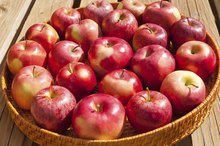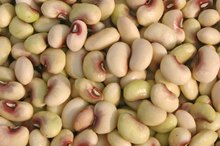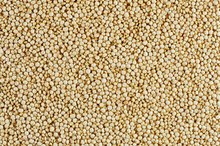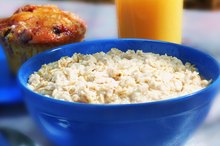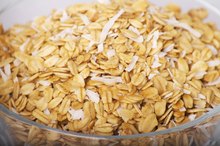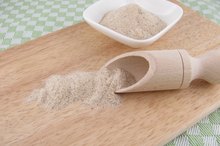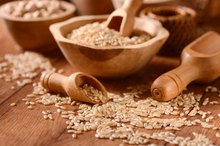Compare Soluble Fiber in Lentils & Barley
There are two different types of fiber – soluble and insoluble. Insoluble fiber, also known as roughage, does not dissolve in water, and therefore passes through the intestinal tract intact. Soluble fiber absorbs excess water in the colon, helping to regulate your system. Barley is a food naturally high in soluble fiber that offers many health benefits. Like barley, lentils contain both soluble and insoluble fiber, making them another excellent source of dietary fiber.
Barley
Barley is a starchy food that contains the complex carbohydrates that provide your body with the fuel it needs for energy. The grain contains beta-glucan soluble fiber – a fiber that slows glucose absorption. Soluble fiber in barley slows digestion of carbohydrates, and therefore the release of glucose into the bloodstream. This valuable nutrient helps prevent colon cancer and lowers bad cholesterol levels thereby reducing the risk of heart disease. You can purchase barley in the supermarket in the form of kernels, flakes or flour. Barley is also used as an ingredient in some commercially prepared foods.
Lentils
Water Soluble Fiber Foods
Learn More
Rich in essential nutrients, the soluble fiber in lentils helps to stabilize blood sugar levels, reducing the risk of developing type 2 diabetes. Besides being high in fiber, lentils are low in fat and calories. Although most of the fiber in lentils is soluble, they also contain insoluble fiber and should not be eaten alone or on an empty stomach. This is particularly true if you have Irritable Bowel Syndrome. Your body needs some insoluble fiber foods, but eating insoluble fiber in high quantities can trigger IBS attacks. Whole grains and proteins are insoluble fiber foods that are more difficult to digest. Combine eating insoluble fiber foods with soluble fiber foods, as this may help.
Recommended Fiber Intake
The recommended fiber intake for adults is 25 g to 35 g daily. On average, you should consume 10 g to 13 g of fiber for every 1,000 calories you consume in your diet, according to Dr. Sharon Griffin, a licensed nutritionist. Your daily intake of fiber should come from a combination of soluble and insoluble food sources, although, on average, more of your body’s fiber needs should come from insoluble fiber. The body does not absorb either type of fiber, but each affects the process of digestion in different ways. A primary advantage of unprocessed, soluble fiber foods is that they have a low glycemic index, and therefore digest more slowly.
Benefits
Wheat Dextrin & Fiber
Learn More
Both types of dietary fiber offer healthful benefits. Soluble fiber lowers cholesterol and maintains blood glucose levels. As it passes through the digestive tract, this type of fiber mixes with water, forming a gellike substance. Consuming adequate amounts of dietary fiber helps prevent hemorrhoids and may reduce the risk colorectal cancer. Getting enough soluble fiber in your diet helps reduce the risk of heart disease and type 2 diabetes. Eating high fiber foods can also help you to lose weight. Because you feel full longer, you tend to eat less.
Related Articles
References
Writer Bio
Amber Keefer has more than 25 years of experience working in the fields of human services and health care administration. Writing professionally since 1997, she has written articles covering business and finance, health, fitness, parenting and senior living issues for both print and online publications. Keefer holds a B.A. from Bloomsburg University of Pennsylvania and an M.B.A. in health care management from Baker College.
